India’s Humanitarian Assistance and Disaster Relief (HADR) & Soft Diplomacy
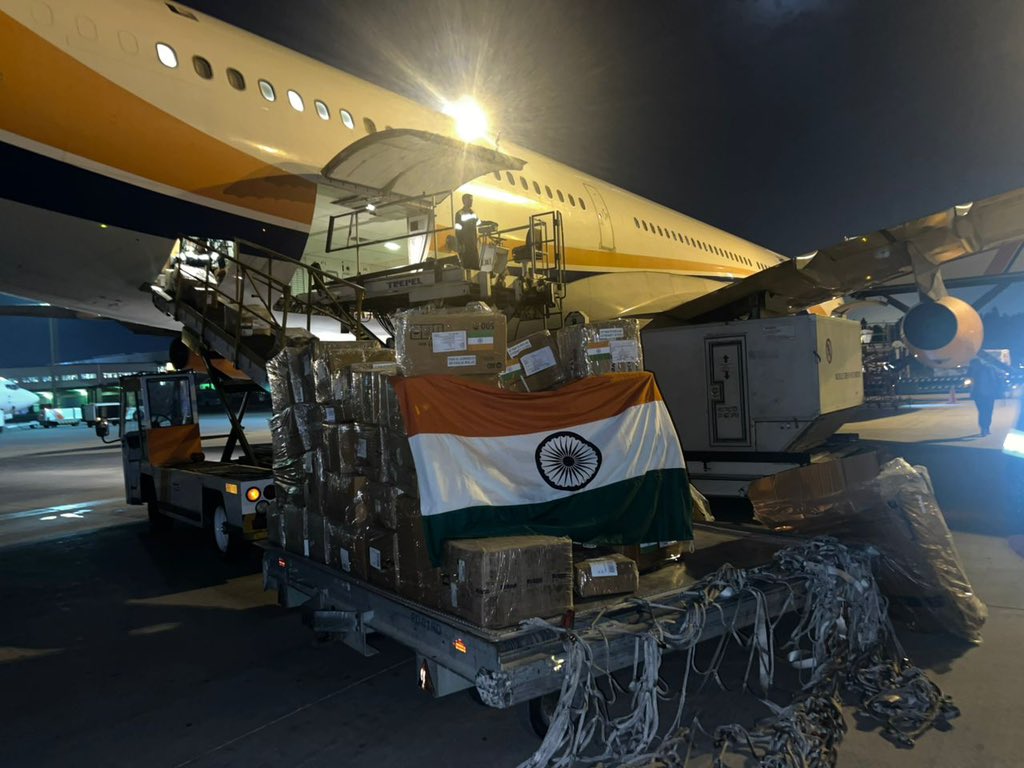
- 09 Sep 2025
Introduction
Humanitarian Assistance and Disaster Relief (HADR) has emerged as a cornerstone of India’s foreign policy and regional engagement. Rooted in the ethos of “VasudhaivaKutumbakam” (the world is one family), India has actively extended aid during natural disasters, reflecting both compassion and strategic foresight. The recent dispatch of 21 tonnes of relief material to Afghanistan after the devastating 6.0-magnitude earthquake, which killed over 1,400 people, underlines India’s commitment to humanitarian outreach and its role as a responsible global actor.
Understanding HADR and Soft Diplomacy
- HADR refers to India’s coordinated relief and rescue operations in disaster-hit regions, at home and abroad. It includes the supply of food, medicines, shelter, sanitation, and technical support.
- Soft Diplomacy implies the use of non-coercive instruments—humanitarian aid, cultural goodwill, and capacity-building initiatives—to enhance India’s global influence and strengthen bilateral trust.
Together, HADR and soft diplomacy enable India to project power through empathy rather than force.
Key Features of India’s HADR Approach
- Rapid Response: The Indian Air Force and Navy ensure swift deployment of relief materials and evacuation missions. For instance, the IAF’s strategic airlift capabilities enable timely supply drops in inaccessible regions.
- Inclusive Relief: Aid packages typically include medicines, food, water, tents, blankets, and water purifiers, focusing on essential survival needs.
- Neutral Assistance: India provides aid without attaching political preconditions, strengthening credibility and neutrality.
- Global Footprint: Beyond neighbours, India has extended assistance to Africa, Pacific Island states, and West Asia, thereby widening its humanitarian outreach.
- Institutional Mechanisms: Agencies like NDMA, NDRF, IAF, Indian Navy, and the Ministry of External Affairs ensure coordination for effective large-scale responses.
Strategic Importance of HADR
- Regional Goodwill: India has earned the reputation of being the “first responder” in South Asia and the Indian Ocean Region. Operations during the Nepal earthquake (2015), Sri Lanka floods, and Maldives water crisis (2014) highlight this proactive role.
- Trust-Building: Humanitarian gestures strengthen bilateral ties, particularly with vulnerable neighbours such as Afghanistan, Nepal, Sri Lanka, and the Maldives.
- Soft Power Projection: Such assistance reinforces India’s image as a responsible rising power committed to collective security and humanitarian values.
- Security Dimension: Active engagement through HADR enhances maritime security partnerships and counters external influences in the region, particularly China’s growing footprint in the Indian Ocean.
Contemporary Relevance
In a world marked by climate change, extreme weather events, and fragile states, the frequency of humanitarian crises is increasing. India’s HADR capacity demonstrates both moral leadership and strategic autonomy. For example, during the COVID-19 pandemic, India’s “Vaccine Maitri” initiative delivered vaccines to over 90 countries, merging humanitarianism with diplomacy.
Furthermore, India’s active participation in multilateral frameworks like BIMSTEC, IORA, and QUAD’s disaster response initiatives showcases its evolving role in shaping global disaster governance.
Challenges
- Logistical hurdles in conflict zones like Afghanistan.
- Resource constraints given India’s vast domestic vulnerabilities.
- The need for greater coordination between civilian and defence agencies.
Conclusion
India’s HADR efforts, anchored in soft diplomacy, reflect a balance of humanitarian compassion and strategic pragmatism. By acting as a credible first responder, India not only saves lives but also nurtures trust, stability, and regional cooperation. In the long run, strengthening institutional mechanisms, enhancing maritime capacity, and integrating climate resilience will further consolidate India’s role as a humanitarian power in a volatile world.
Medical Tourism in India
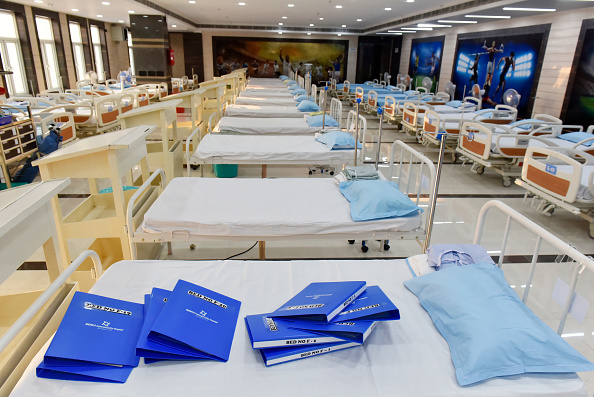
- 10 Aug 2025
In News:
India has emerged as one of the leading destinations for medical tourism, attracting foreign patients due to its cost-effective treatments, advanced healthcare infrastructure, and traditional wellness systems. The surge in foreign tourist arrivals (FTAs) for medical purposes highlights the sector’s growing role in India’s economy, diplomacy, and healthcare landscape.
Current Trends in Medical Tourism
- Between January–April 2025, India recorded 1,31,856 medical FTAs, accounting for 4.1% of total FTAs in this period.
- In 2024, medical FTAs stood at 6.44 lakh, a sharp increase from 1.82 lakh in 2020, indicating robust growth despite global pandemic disruptions.
- Top source countries (2024):
- Bangladesh – 4.82 lakh arrivals (largest contributor).
- Iraq – 32,008 arrivals.
- Somalia – 11,717 arrivals.
- Oman – 10,431 arrivals.
- Uzbekistan – 8,921 arrivals.
This surge reflects both India’s healthcare competitiveness and rising global demand for affordable, high-quality treatment.
Why India attracts Medical Tourists
- Affordability & Quality – Advanced medical procedures at a fraction of Western costs.
- Specialised Expertise – Strong presence in cardiology, orthopaedics, oncology, organ transplants, and IVF.
- Traditional Wellness – Ayurveda, Yoga, and naturopathy complement allopathic care, attracting wellness tourists.
- Regulatory Support – Extension of e-Medical visa and attendant visa facilities to 171 countries, easing travel for patients.
- Integrated Ecosystem – Hospitals, facilitators, hotels, airlines, and regulatory bodies work together under the ‘Heal in India’ initiative.
Government Initiatives
- National Efforts:
- ‘Heal in India’ campaign (Ministry of Health & Family Welfare) promoting India as a global healthcare hub.
- Encouraging public-private partnerships (PPP) to expand hospital capacity, improve service delivery, and enhance medical infrastructure.
- Branding and showcasing India’s medical expertise at international platforms.
- Visa Facilitation:E-medical visa/e-medical attendant visa for 171 countries to smoothen entry of international patients.
- State-level Initiatives (Case Study: Gujarat):
- Registration of wellness retreats on official tourism websites.
- Participation in global health & wellness exhibitions, seminars, and conferences.
- Familiarisation trips (FAM) for industry stakeholders to promote wellness centres.
- Training paramedical staff to improve quality of care for foreign patients.
- Use of social media and global outreach to project Gujarat’s health infrastructure and wellness potential.
Economic & Strategic Significance
- Foreign Exchange Earnings – Growing inflows from high-value medical travellers.
- Employment Generation – Creation of jobs in healthcare, tourism, and allied sectors.
- Soft Power & Health Diplomacy – India’s outreach in medical care strengthens its global image and fosters bilateral goodwill, especially with neighbouring and developing countries.
- Regional Leadership – With Bangladesh, Iraq, and African nations as major contributors, medical tourism strengthens India’s role as a regional healthcare hub.
Challenges
- Uneven distribution of healthcare infrastructure across states.
- Regulatory concerns regarding quality assurance in smaller hospitals and clinics.
- High dependence on a few source countries.
- Competition from emerging medical tourism destinations like Thailand, Singapore, and Turkey.
Way Forward
- Standardisation& Accreditation – Enforcing global quality standards across hospitals to build trust.
- Digital Integration – Expanding telemedicine, AI-based diagnostics, and digital health records for seamless cross-border care.
- Wellness Tourism Synergy – Combining allopathic treatments with Ayush-based wellness offerings.
- Infrastructure Development – Strengthening airports, medical hubs, and hospitality sectors near healthcare clusters.
- Diversification of Source Countries – Targeting Africa, Middle East, and Latin America for expansion.
Conclusion
India’s medical tourism sector is a sunrise industry, merging healthcare excellence with tourism potential. With over 1.3 lakh medical FTAs in early 2025 alone, the sector underscores India’s strength as a global healthcare destination. By addressing challenges and scaling up initiatives like ‘Heal in India’, India can transform medical tourism into a key pillar of economic growth, soft power, and international diplomacy.
India’s Ethanol Blending Success

- 26 Jul 2025
In News:
India has achieved a significant milestone by reaching 20% ethanol blending in petrol by March 2025, five years ahead of the original 2030 target under the National Policy on Biofuels (2018). This landmark achievement represents a transformative step in India’s journey toward energy self-reliance, environmental sustainability, and inclusive rural development.
Genesis and Policy Framework
The Ethanol Blended Petrol (EBP) Programme, launched in 2003 and significantly scaled up post-2014, aims to reduce dependence on imported crude oil, promote clean fuels, and support the agricultural economy. The programme is spearheaded by the Ministry of Petroleum and Natural Gas in collaboration with the Ministries of Agriculture and Food Processing. The National Policy on Biofuels expanded the permissible feedstocks for ethanol production, including sugarcane juice, B-molasses, damaged grains, maize, and agricultural residues.
Complementary initiatives like PM-JI-VAN Yojana, SATAT, PLI for ethanol production, and the National Bio-Energy Programme have accelerated infrastructure creation and second-generation (2G) ethanol technologies.
Progress and Scaling
The ethanol blending rate rose from 1.53% in 2014 to 8.17% in 2020–21, then to 12.06% in 2022–23, and reached 14.6% in 2023–24, culminating in the 20% target in early 2025. This scaling was supported by ?40,000 crore in investments and proactive procurement by Oil Marketing Companies (OMCs) at pre-fixed prices, providing market stability for distilleries and farmers.
Over 17,000 fuel retail outlets now offer E20 fuel, with 400 E100 pumps operational. Automakers such as Honda and Hero MotoCorp have ensured vehicle compatibility with E20 fuels, ensuring consumer acceptance.
Economic and Rural Impact
The EBP programme has delivered strong macroeconomic and grassroots benefits. By reducing crude oil imports, India has saved substantial foreign exchange and improved energy security. At the micro level, farmers—particularly sugarcane and maize growers—have benefited from assured off-take and stable prices, reducing rural distress and boosting income security.
Moreover, the ethanol ecosystem has generated rural employment, supported local manufacturing under ‘Make in India’, and catalyzed investment in agro-industrial infrastructure.
Environmental and Climate Gains
India’s ethanol blending drive aligns with its climate commitments, especially its Net Zero by 2070 target. Ethanol blending has helped avoid 698 lakh tonnes of CO? emissions, reduced particulate pollution, and improved urban air quality. The shift also supports circular economy principles by utilizing agricultural surplus, foodgrains unfit for consumption, and residues—converting waste to wealth.
Future strategies emphasize 2G ethanol from non-food biomass and municipal waste, thereby reducing land and water stress associated with first-generation biofuels. Advanced technologies like lignocellulosic processing, sustainable aviation fuel (SAF), and ethanol-to-hydrogen conversion are in focus.
Conclusion
India’s early achievement of 20% ethanol blending demonstrates the success of coordinated policymaking, technological adoption, and stakeholder alignment. It serves as a model of how energy policy can intersect with rural prosperity, environmental stewardship, and industrial growth. Going forward, India’s biofuel roadmap not only reinforces its clean energy leadership but also strengthens its resolve for energy Atmanirbharta, sustainable development, and climate resilience.
Suposhit Gram Panchayat Abhiyan

- 26 Dec 2024
In News:
On December 26, 2024, Prime Minister Narendra Modi presided over the Veer Bal Diwas celebrations at the Bharat Mandap in New Delhi. This annual event commemorates the martyrdom of the sons of Sri Guru Gobind Singh Ji and highlights the importance of nurturing the next generation. During the occasion, PM Modi also launched the ‘Suposhit Gram Panchayat Abhiyan,’ an initiative aimed at improving nutrition and well-being in rural India.
Veer Bal Diwas: Commemorating Sacrifice and Courage
Veer Bal Diwas was declared on January 9, 2022, by PM Modi to honor the sacrifices made by the young sons of Guru Gobind Singh Ji — Sahibzada Baba Zorawar Singh and Baba Fateh Singh — who were martyred in 1704. During the Mughal-Sikh battles, these two brave boys were captured and offered safety if they converted to Islam, which they refused. Their refusal to abandon their faith led to their brutal martyrdom by being bricked alive in the walls of a fort in Sirhind (Punjab). This act of resilience and unwavering faith is a cornerstone of Sikh history and culture.
Veer Bal Diwas not only commemorates their sacrifice but also serves as a reminder of the strength, faith, and courage demonstrated by all four of Guru Gobind Singh Ji’s sons. It underscores the Sikh ideals of sacrifice, courage, and dedication to faith.
Suposhit Gram Panchayat Abhiyan: Addressing Malnutrition in Rural Areas
On the same day, PM Modi launched the 'Suposhit Gram Panchayat Abhiyan', a nationwide mission focused on improving nutritional outcomes in rural areas. The initiative aims to enhance nutrition-related infrastructure and promote active community participation in tackling malnutrition. By encouraging village-level involvement, the program seeks to ensure that nutrition becomes a community-driven effort.
Key Objectives
- Malnutrition Eradication: The initiative focuses on combating malnutrition in rural communities by improving access to better nutrition.
- Healthy Competition: Encourages competition among villages to adopt best practices for nutrition and overall health.
- Sustainable Development: Promotes long-term, sustainable health practices that align with India's broader goals, such as the Poshan Abhiyan and the Sustainable Development Goals (SDGs).
The program aims to make rural populations active participants in improving their own well-being, strengthening community-driven initiatives for better nutritional outcomes.
Engaging Children and Fostering Patriotism
In line with Veer Bal Diwas, various events were organized to engage young minds across the nation. These initiatives not only raised awareness about the significance of the day but also fostered a culture of courage, dedication, and patriotism.
- Online Competitions: Interactive quizzes were conducted through platforms like MyGov and MyBharat to encourage participation and understanding of Veer Bal Diwas.
- Creative Activities: Schools, Child Care Institutions, and Anganwadi centers organized storytelling, creative writing, and poster-making contests to engage children and promote nationalistic values.
Honoring Young Achievers: PMRBP Awardees
The event also saw the presence of the recipients of the Pradhan Mantri Rashtriya Bal Puraskar (PMRBP), which recognizes children who have demonstrated exceptional abilities in various fields. The awardees, 17 in total, were presented with medals, certificates, and citation booklets by President Droupadi Murmu. These young achievers served as a source of inspiration, reinforcing the theme of celebrating youth potential on Veer Bal Diwas.
Conclusion: Strengthening the Foundation of India’s Future
The celebrations of Veer Bal Diwas and the launch of the Suposhit Gram Panchayat Abhiyan highlight the government’s commitment to nurturing India’s future by investing in its children and rural communities. By honoring historical sacrifices and fostering community-driven health and nutrition initiatives, these efforts contribute to building a resilient, prosperous India that can meet global challenges head-on. The twin focus on children’s development and rural well-being underscores India’s vision of a healthier, more inclusive society, aligned with national and global development goals.
Central Universities (Amendment) Bill, 2023 and the Legend of Sammakka and Sarakka (NewsOnAir)
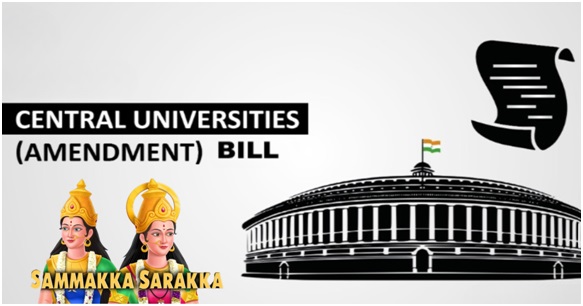
- 06 Dec 2023
Why is it in the News?
The Lok Sabha on Wednesday (6th December 2023) took up the Central Universities (Amendment) Bill, 2023 for consideration and passing. The Bill amends the Central Universities Act, 2009, which establishes central universities for teaching and research in various states.
News Summary:
- Recently, the Lok Sabha took up the Central Universities (Amendment) Bill, 2023 for consideration and passing.
- The Bill amends the Central Universities Act, 2009, which establishes central universities for teaching and research in various states.
- The Bill seeks to establish a Central Tribal University in Telangana which will be named ‘Sammakka Sarakka Central Tribal University’.
Background:
- This legislative proposal aligns with the commitments outlined in the Andhra Pradesh Reorganisation Act, 2014.
- The 2014 Reorganisation Act resulted in the division of the former state of Andhra Pradesh into Telangana and the remaining Andhra Pradesh state.
- As per this act, both Andhra Pradesh and Telangana were promised support to establish a tribal university each.
Key Features:
- Amendment to Central Universities Act, 2009: The bill involves amendments to the Central Universities Act, 2009, a legislation enacted to establish and incorporate universities dedicated to teaching and research across various states.
- Name of the Central Tribal University: The university is named as a tribute to the legendary mother-daughter duo, Sammakka and Sarakka.
- Addressing Regional Aspirations: The establishment of the Sammakka Sarakka Central Tribal University is poised to address and fulfil regional aspirations for the foreseeable future.
- Focus on Tribal Population: The university's primary objective is to offer avenues for higher education and research facilities, with a special emphasis on serving the tribal population of India.
About the Legend of Sammakka and Sarakka:
- As per the legends, Sammakka was married to a feudal chief of the Kakatiyas dynasty, Pagididda Raju who ruled over the Warangal region.
- She had two daughters and one son - Sarakka or Saralamma, Nagulamma and Jampanna, respectively.
- In the 13th century, Saralamma succumbed in a battle against local rulers protesting tax imposition, while Sammakka vanished into the hills.
- The local (Koya) tribals believed she transformed into a vermillion casket.
The Sammakka Saralamma Jatara:
- The Sammakka Sarakka Jathara, also known as Medaram Jathara, is a biennial festival that commemorates the 13th-century battle where the mother-daughter duo actively protested against local rulers imposing taxes on the Koya tribe.
- Sammakka and Sarakka are revered as protectors of the Koya tribe, and the festival is distinctively free from Vedic or Brahmanic influences.
- During the festival, devotees take a holy dip in Jampanna Vagu, a stream and tributary of the River Godavari.
- Commencing from Medaram, situated in the Eturnagaram Wildlife Sanctuary within the Dandakaranya forest, the Jathara involves Koya tribe priests performing rituals.
- Various tribal and non-tribal communities from Andhra Pradesh, Madhya Pradesh, Chhattisgarh, Odisha, Maharashtra, Karnataka, and Jharkhand actively participated in the event.
- Recognized as the second-largest fair in India and often likened to the Kumbh Mela for tribals, the festival holds the status of a state festival declared by the Telangana government.
Political and Cultural Significance of the Sammakka Saralamma Jatara:
- The festival attracts participation from the Union Ministry of Tribal Affairs and the Telangana state government, including the Chief Minister.
- Funding has been released for community shelters and infrastructure, and the Ministry of Tourism allocated Rs. 75.88 crore for the integrated development of a tribal circuit under the Swadesh Darshan Scheme.
- This circuit encompasses Mulugu, Laknavaram, Medavaram, Tadvai, Damaravi, Mallur, and Bogatha Waterfalls, where the Sammakka-Sarakka temple is located.
- Mulugu, a reserved Scheduled Tribes (ST) assembly seat with a population of approximately 2.6 lakhs (2011 Census), holds political and cultural significance with a 75% ST population.
- The UNESCO World Heritage Site of Ramappa Temple is situated about 15 km from Mulugu.
Koya Tribe
- The Koya tribe, recognized as the largest Adivasi tribe in Telangana, holds Scheduled Tribe status in the region.
- They are dispersed across the Telugu-speaking states of Telangana and Andhra Pradesh.
- The Koyas commonly refer to themselves as Dorala Sattam (Lords group) and Putta Dora (original lords).
- In their dialect, akin to Gonds, they identify as "Koitur."
- Habitat and Livelihood: The Godavari and Sabari rivers, integral to their habitat, significantly shape the economic, social, and cultural aspects of Koya life.
- Primarily settled cultivators, they engage in the cultivation of crops like Jowar, Ragi, Bajra, and various millets.
- Language: While some Koya individuals have adopted Telugu as their primary language, others in different regions still speak the Koya dialect.
- Religion and Festivals: Key deities in Koya religious practices include Lord Bhima, Korra Rajulu, Mamili, and Potaraju.
- Major festivals for the Koyas include Vijji Pandum (seeds charming festival) and Kondala Kolupu (festival to appease Hill deities).
- Cultural Practices: During festivals and marriage ceremonies, the Koyas showcase a vibrant and robust dance known as Permakok ata (Bison horn dance).
Allahabad HC allows survey of Mathura Idgah: What is this plea in the Sri Krishna Janmabhoomi case (Indian Express)
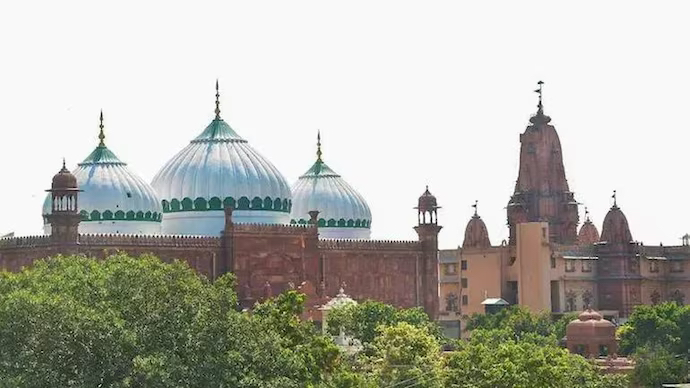
- 15 Dec 2023
Why is it in the News?
The Allahabad High Court on Thursday allowed the primary survey of the Shahi Idgah complex adjacent to the Shri Krishna Janmabhoomi Temple in Uttar Pradesh's Mathura by a court-monitored three-member team of advocate commissioners.
Context:
- The Allahabad High Court recently approved the survey of the Shahi Idgah complex in Uttar Pradesh's Mathura.
- Petitioners claim that the Shahi Idgah adjoining the Krishna Janmabhoomi temple in Mathura holds signs suggesting that it was a Hindu temple once.
- The Krishna Janmabhoomi-Shahi Idgah case is the second temple-mosque dispute in which the high court has allowed to conduct a survey over the past months.
- Earlier, a survey was ordered in the Gyanvapi-Kashi Vishwanath temple dispute in Varanasi.
What is Krishna Janmabhoomi-Shahi Idgah case?
- The mosque was built by Aurangzeb in 1670 on the site of an earlier temple.
- The area was regarded as nazul land — non-agricultural state land owned by the Marathas, and then the British.
- Before the mosque was built, Raja Veer Singh Bundela of Orchha had also built a temple on the same premises in 1618.
- In 1815, Raja Patni Mal of Benaras bought the 13.77 acres in an auction from the East India Company.
- The Raja’s descendants — Rai Kishan Das and Rai Anand Das — sold the land to Jugal Kishore Birla for Rs 13,400, and it was registered in the names of Pandit Madan Mohan Malaviya, Goswami Ganesh Dutt, and Bhiken Lalji Aattrey.
- The Shri Krishna Janmabhoomi Trust was set up by Birla, and it acquired the ownership rights over the Katra Keshav Dev temple.
- In 1951, the 13.77 acres were placed in the trust, with the condition that the “trust property will never be sold or pledged.”
- In 1956, the Shri Krishna Janmasthan Sewa Sangh was set up to manage the affairs of the temple.
- In 1977, the word ‘Sangh’ in the registered society’s name was replaced with ‘Sansthan.’
What is the Latest Plea in the Sri Krishna Janmabhoomi-Shahi Idgah Case?
- The latest application was filed by the Hindu side, seeking a survey of the Shahi Idgah mosque — which was allowed by a Bench of Allahabad High Court recently.
- The petition pleads that the High Court passes an order directing the UP Sunni Central Waqf Board and the Shahi Idgah mosque committee “to remove the construction raised by them encroaching upon the land” in dispute.
- The petition further asks the court to direct the two opposing parties to hand over the land to the Shree Krishna Janmbhoomi Trust within the time provided by the court.
- The plea further seeks an order restraining the Waqf Board and the mosque committee, and that people on their behalf from entering into the premises of the 13.37 acres of land at Katra Keshav Dev City and District Mathura.
- It also says that a “compromise agreement” dated October 12, 1968, between the Shri Krishna Janmasthan Seva Sansthan — the temple management authority, a registered society under law — and the Trust Shahi Masjid Idgah – was “illegal and void”.
- The reasoning behind this, as per the plea is that “society Shree Krishna Janmasthan Seva Sangh had no right over the property involved”.
- The petition filed by the Hindu side says that “it is a matter of fact and history that Aurangzeb ruled over the country and had issued orders for demolition of a large number of Hindu religious places and temples including the temple standing at the birth place of Lord Shree Krishna at Katra Keshav Dev, Mathura in the year 1669-70 AD”.
- “The army of Aurangzeb partly succeeded in demolishing Keshav Dev Temple and a construction was forcibly raised showing the might of power and said construction was named Idgah Mosque.
- The petition also says that “the order (for demolition) passed by Aurangzeb finds a place in the Official Court Bulletin (Akhbaraat) of January – February 1670”.
What are the counterclaims from the Muslim side?
- The Muslim side claimed that “the Shahi Idgah Mosque does not fall within the ambit of 13.37 acres land at Katra Keshav Dev”.
- “The place of birth of Lord Krishna does not lie beneath the Mosque. The claim of the plaintiffs is based on guesswork and is not substantiated by any documentary evidence.
The case so far and Gyanvapi order:
- At least a dozen cases were filed in courts in Mathura by different petitioners.
- A common thread in all the petitions is a prayer for the removal of the mosque from the 13.77-acre complex.
- The latest Mathura order is similar to the one in Varanasi’s Gyanvapi Mosque, also built adjacent to a venerated Hindu temple.
What Happened in the Case of the Gyanvapi Mosque?
- Last year in the month of May, a videographic survey of the Kashi Vishwanath temple-Gyanvapi mosque was completed by a Commission appointed by the local court.
- During the survey proceedings, a structure which the Hindu side claimed was a “shivling”, and the Muslim side claimed was a “fountain”, was found to be inside the mosque premises.
- Subsequently, a scientific survey of the Gyanvapi mosque complex was ordered by the Varanasi district court.
- This time, the District and Sessions Judge AK Vishvesha had directed the ASI to “undertake scientific investigation/survey/excavation at the property in question.
- The survey was halted after the mosque committee approached the Allahabad High Court, and then the Supreme Court, seeking a stay on the survey.
- Both the courts cleared the decks for the survey which was resumed on August 4 amid tight security arrangements.
- The ASI teams have been surveying the campus since.
- Recently, the Varanasi district court granted some more time to the Archaeological Survey of India (ASI) to submit the findings of the court-ordered scientific survey of the Gyanvapi mosque premises.
The Bharatiya Nagrik Suraksha Sanhita Bill 2023 (NewsOnAIR)
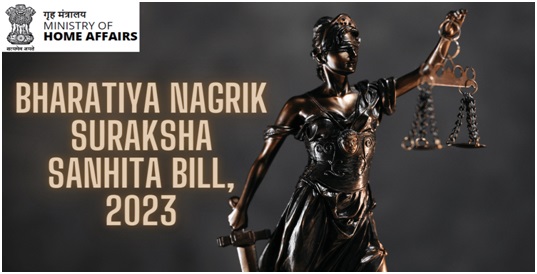
- 14 Aug 2023
Why in the News?
- The Home Minister, Amit Shah introduces three bills namely, the Bharatiya Nyaya Sanhita 2023, the Bharatiya Nagarik Suraksha Sanhita 2023, and the Bharatiya Sakshya Bill 2023.
- The Bharatiya Nyaya Sanhita 2023 is designed to replace the Indian Penal Code of 1860, the Bharatiya Nagarik Suraksha Sanhita 2023 aims to supersede the Criminal Procedure Act, of 1898, and the Bharatiya Sakshya Bill 2023 will take the place of the Indian Evidence Act, 1872.
- The Minister emphasized that these Bills are set to revolutionize the country's criminal justice system.
- Their primary focus is on delivering justice to individuals rather than merely imposing penalties.
- These legislative measures have been meticulously developed after thorough discussions and deliberations. Notably, provisions relating to sedition will be fully removed.
- The laws have undergone 313 modifications to bolster the criminal justice system's efficacy and robustness.
What Prompted the Introduction of the Bharatiya Nagarik Suraksha Sanhita Bill?
- The culmination of Azadi ka Amrit Mahotsav on August 15, 2023, marks the commencement of India's journey from 75 to 100 years of independence, heralding the vision of a resplendent India.
- On August 15, 2022, during his address from the Red Fort, the Prime Minister of India presented the nation with the Panch Pran, or five vows, one of which is the eradication of all vestiges of subjugation.
- Spanning from 1860 to 2023, India's criminal justice system has endured under laws formulated by the British Parliament.
- In this context, the introduction of these three bills stands as an embodiment of the commitment to fulfill one of the five vows - instilling a distinct Indian essence to drive a transformative shift in the nation's criminal justice system.
What Constitutes the Code of Criminal Procedure (CrPC)?
- Established in 1973 (enforced on April 1, 1974), the CrPC stands as the primary legislation governing the procedural aspects of administering substantive criminal law in India.
- It serves to:
- Outline the mechanisms for investigating crimes,
- Facilitate the apprehension of suspected individuals,
- Facilitate the collection of evidence,
- Ascertain the guilt or innocence of the accused party, and
- Determine the appropriate punishment for those found guilty.
- Furthermore, the CrPC addresses matters such as public disturbances, prevention of offenses, and the support of family members like spouses, children, and parents.
- The Bharatiya Nagarik Suraksha Sanhita Bill 2023 aims to replace the CrPC as it currently stands.
What are the Main Amendments Proposed in the CrPC?
- Enhanced Technological Integration:
- Proceedings including trials, appeals, and depositions (including those of public servants and police officers) can be conducted through electronic means.
- Accused individuals' statements may be recorded via video conferencing.
- Summons, warrants, documents, police reports, and evidence statements can be generated in electronic format.
- Integration of Communication Devices:
- The bill introduces "communication devices" as part of electronic communication.
- Individuals may be required to produce digital evidence-containing devices upon court or police directives.
- Controlled Use of Handcuffs:
- Police officers may use handcuffs during the arrest of repeat offenders, escapees from custody, or those involved in organized crime, terrorist acts, or offenses against the state.
- Strengthened Safeguards:
- Section 41A of CrPC will be renumbered as Section 35.
- Added provision: Arrest without prior permission from a DSP isn't permitted for offenses carrying less than 3 years' punishment or if the person is over 60 years old.
- Mercy Petitions Clarified:
- Guidelines outlined for filing mercy petitions in death sentence cases.
- A 30-day window after being informed of petition disposal for submitting a mercy plea to the Governor.
- Subsequent recourse to the President within 60 days if rejected, with no further court appeal.
- Expedited Sanction to Prosecute:
- Government to decide on granting or rejecting prosecution sanction within 120 days of receiving a request.
- Inaction will be deemed as granting sanction.
- Exemptions for sexual offenses, trafficking, etc., from requiring sanction.
- Arms Possession Regulations:
- District magistrates retain power under Section 144A to prohibit arms possession during processions and mass activities to maintain public peace.
- Samples Collection Without Arrest:
- Magistrates are empowered to order samples of signature, handwriting, voice, or finger impressions for investigation without arrest.
- Police Detention and Action:
- Police are enabled to detain or remove individuals resisting preventive actions or defying orders.
- Trial in Absentia:
- In alignment with stringent anti-terror laws like UAPA, where the burden of proof is reversed.
- Accused must prove innocence rather than the state proving guilt.
- These proposed amendments aim to modernize and enhance the effectiveness of the Criminal Procedure Code while upholding safeguards and rights.
Importance of the Bharatiya Nagarik Suraksha Sanhita Bill:
- Streamlined Criminal Procedure:
- The bill seeks to consolidate and amend criminal procedure laws, establishing specific timelines for time-bound investigations, trials, and verdicts.
- This ensures a prompt and efficient dispensation of justice.
- Expedited Justice Delivery:
- The legislation stands to expedite the judicial process, leading to a swifter resolution of cases.
- Alignment with Digital India Initiative:
- The draft legislation is in sync with the Digital India campaign.
- It acknowledges digital records as admissible evidence, conferring the same legal validity and enforceability as traditional paper records.
- Enhanced Citizen-Centric Approach:
- The bill adopts a citizen-centric perspective by ensuring that First Information Reports (FIRs) are readily accessible to complainants.
- Victims are kept informed about case progress via digital channels.
- Summary Trials for Minor Offences:
- The bill introduces summary trials for minor offenses, further speeding up the legal process for less serious cases.
- Facilitation of 'Zero FIR':
- The bill allows for the lodging of a 'Zero FIR' at any police station, irrespective of jurisdiction.
- This enables swift initiation of the legal process without being bound by geographical constraints.
The Bharatiya Nagarik Suraksha Sanhita Bill aims to modernize criminal procedures, leverage technology for efficiency, prioritize citizens' access to justice, and foster a faster and more accessible legal system.
